#multituberculate
Explore tagged Tumblr posts
Text
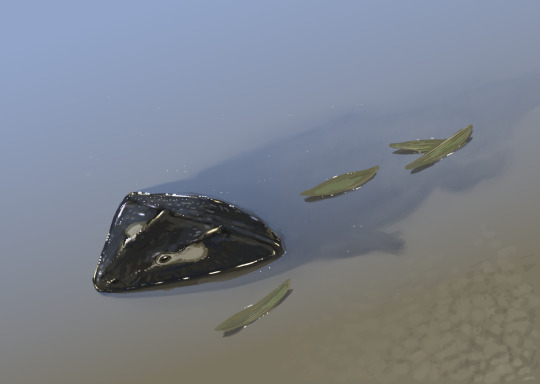
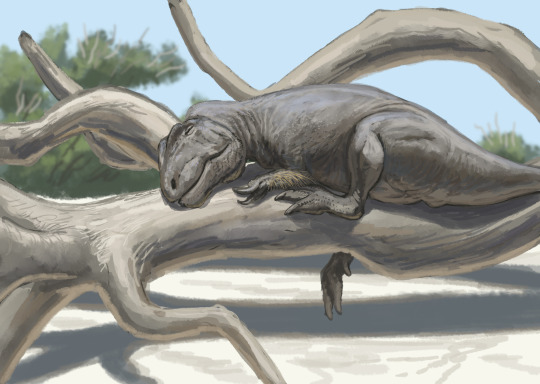
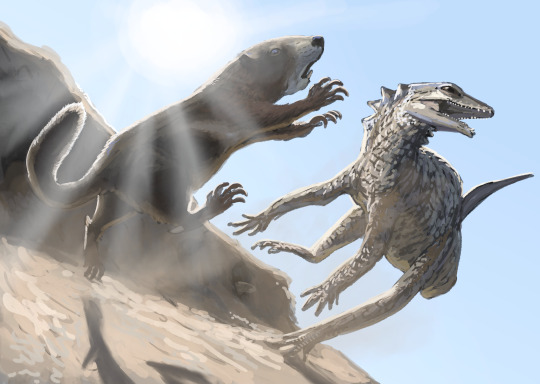
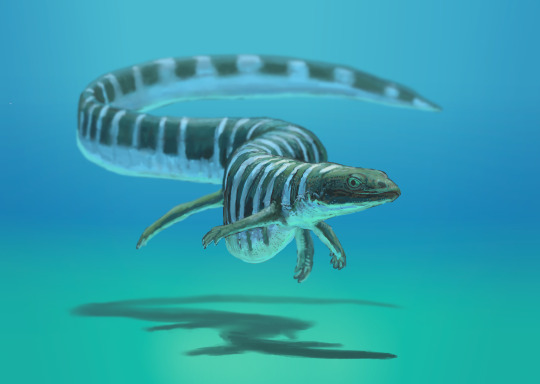
Results from the #paleostream!
Pneumatostega, Shaochilong, Tombaatar (fighting off Gobiosuchus) and Mesoleptos.
The weirdness of prehistory in all it's glory :3
631 notes
·
View notes
Text
The last sauropod
Oh lonely one
Oh unfortunate one
Last whimper of billions booming voices stretching through infinity
You are the end
Not of a species
Not of an era
But of a world
Very soon flies and fungi shall feast on your kind's flesh for the very last time. For the last time in forever.
But right now the sun warms your skin
Soft dirt crunches under your feet
Joy returns to a resurrected world


I don't know when and how the last sauropod died, but I want to believe that it got to see the Sun.
#a youngster never mean't to reach maturity and abnormally small after a lifetime of malnourishment it is still the largest animal on Earth#paleoart#paleoblr#prehistoric life#kpg extinction#dinosaur extinction#paleocene#cretaceous period#dinosaur#sauropod#titanosaur#alamosaurus#prehistoric birds#waterfowl#mammals#multituberculate#post apocalyptic#borealosuchus#crocodilian#my writing#poem?
39 notes
·
View notes
Text



New animal for Multituberculate Earth: https://multituberculateearth.wordpress.com/2022/04/03/mammals-at-sea/
#multituberculate#multituberculata#multituberculate earth#speculative zoology#spec evo#speculative biology#speculative evolution
35 notes
·
View notes
Text

Lemuria phase 1.5 submissions
Number one
I had lots of fun with creatures and their names, starting with this guy, the shmobler. This guy was my introduction to mammals and don’t worry they get worse.
#paleoart#speculative biology#speculative evolution#spec evo#lmao#art#lemuria#multituberculate#mammal
22 notes
·
View notes
Text
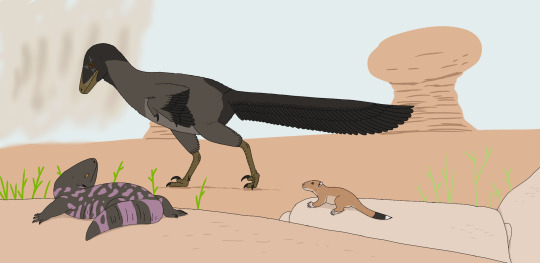
Harenadraco with other denizens of Barun goyot formation; the monstersaurian lizard Gobiderma and multituberculate mammal Catopsbaatar.
33 notes
·
View notes
Text

Meniscoessus is a multituberculate mammal about the size of a groundhog from late cretaceous north america. It most likely fed on plant matter, and was probably rather cute.
9 notes
·
View notes
Text
348 notes
·
View notes
Text

Aggression/ Danger to humans: Low/Low, Very Low
Element/ Ailment: None
The Harlequin Snare, or Mekljut in Dhënuvgöm, is a species of snare endemic to the southern region of the great mountain range separating the northeastern and eastern continents of Atterra. Like most other snares, Harlequin Snares make their home on the sides of riverbanks, digging out small three chambered hovels with their large claws and reinforcing it with silk they produce with their salivary glands. These avian wyvernids are ambush hunters, using their prehensile tails with unique hand-like tips to wrap around a rock or tree stump to root them in place. Once they have secured themselves to a perch, snares will use their anisodactyl feet to further secure themselves in place as they lean over the water or a game trail, waiting for unsuspecting prey to pass by. Once prey has entered their strike range, snares will rapidly strike like a snake to snap up prey and devour it whole. Snares are also known for slithering their heads down small multituberculate burrows to eat the inhabitants within.
When not hunting, snares forage for berries and soft leaves at dawn and dusk outside of their hovels before waddling back to their homes in the early morning or early night. While snares may live near each other, they are entirely solitary animals. Fights between two snares outside of mating season are extremely rare, and most snares will walk past the other without so much as a sideways glance. Snares only engage in conflict when another snare (typically a younger one) tries to enter the hovel of an older snare. These conflicts usually end with the older snare chasing out the youngster or the youngster stealing the often elderly snare's hovel for its own.
When confronted with a threat, snares have little in the way of natural defenses, only possessing tough scales on their neck and claws used for digging. Instead, snares rely on securing themselves to a rock or stump and posturing to protect themselves. While posturing, snares will move their elbows away from their body and slightly open their wings to appear larger. Additionally, snares will coil their neck and hiss at an opponent, ready to strike. Should the threat not heed this warning, a snare will snap at the opponent while remaining rooted in place, relying on the scale armoring on its front and neck for protection. Should the snare not have a good grip and is pried off its perch, the bird will elect to coil its tail around the attacker and dig its claws into them while biting.
During the breeding season in late fall, male Harlequin Snares will leave their hovels and search for hovels with females who are ready to mate. Once a male has found female snare’s hovel, the males will jostle for position by shoving and slamming their necks together until one male is knocked over or backs down. The male who wins the most matches will be at the front of the line in front of the female's hovel, with the weakest male in the back. Once they have formed their line, the males will collectively call to the female until she exits her hovel. Once she’s outside, the males will waddle around in a conga line with their heads necks and heads held high. While in the conga line, male snares tilt their heads side to side in the sink, trying to catch the female's attention. The male in front gets the most attention from the female as she watches them waddle around in front of her hovel. Female snares measure the color of the male's face and his movements when deciding his fitness for breeding. Once the female chooses a male, she will bump into him with her chest to show interest. The two will then do a matching rotation dance before the two finally mate. If the chosen male fails the rotation dance, the female will bite him, and the conga line will continue until the female chooses another male or retreats into the hovel. Once a male mates with the female or she is not interested in any of them, the female will retreat back into her hovel, and the males will disperse to look for more females.
After mating, female snares will lay 2-3 eggs during winter and will sit on them until they hatch during early spring. Once hatched, snare chicks are raised by their mother until they are 50-60 days old, wherein she will chase away the juveniles. Once on their own, juvenile harlequin snares will search for spots on riverbanks to dig their hovels or take over a multituberculate burrow to inhabit. Juvenile snares reach full size by the time they are six months old and reach sexual maturity at 12 months old. Snares under expert care can live between 10 to 12 years before passing away of old age.
Due to their particularness when it comes to habitat, it is extremely difficult to have a snare in captivity and have them breed. However, one tribe of Hakdor that not only managed to breed captive snares but created three distinctive breeds of domestic snares. The two lesser-known breeds, still occasionally used by some humans, are hunting snares. One breed specializes in traversing over the ground and catching small animals in hard-to-reach places, with the unique preference of creating hovels above ground by stitching twigs, leaves, and moss together with silk. The second breed specializes in hunting small gopher-like dicynodonts (infamous for eating the roots of crops, fruit trees and berry shrubs), utilizing especially strong neck scales to protect their necks from the powerful bites of their prey.
This breed hunts by sticking its head and neck into the dicynodont’s burrows and eating all the occupants whole. These snares hovels are pits dug in the ground with a roof made from stitched together soil, twigs, and moss with silk. Each hovel has multiple hatches in the top for the snare to stick their heads out of and snatch prey on the roof of their hovel. The last breed of snare is the illustrious Silk Snare, bred not only for its beauty but also for its silk. The silk of a Silk Snare was worth more than its weight in gold due to its rarity, softness, and durability. Silk Snares were so important to the Hakdor tribe who bred them; each one had a pedigree, personal guards, caretakers, and a stamp on a certificate for every spool of silk it created. Unlike the other two domestic breeds, which can be found in the wild after the collapse and conquering of the tribe who bred them. Silk snares are only believed to have survived due to being living symbols of opulence and the enormous effort of a small but dedicated group of breeders.
#art#artwork#creature#creature art#creature design#digital art#drawing#illustration#monster design#monsters#my artwork#my art#my post#fantasy creature#creature drawing#creatures#bestiary#fantasy worldbuilding#fantasy#fantasy art#my artwrok#digital 2d#digital illustration#digital drawing#digital painting#digitalart#speculative biology#speculative zoology#speculative evolution#speculative ecology
53 notes
·
View notes
Text
“Mamalodragons” are a strange group of medium to large sized flying scavengers. Unlike true dragons they are multituberculates giving birth to underdeveloped young that cling to the mother during their development.

#speculative biology#speculative ecology#speculative evolution#speculative zoology#traditional art#traditional sketch#paleontology#paleontologist#spectember#paleo art#paleoblr#speculative anatomy#dragons#dragon oc#dragon art#wyverns#mammals
68 notes
·
View notes
Text

Here the result of tonight's formation stream! Corral Bluffs is a locality of the Denver formation that has become more and more important in recent years as it has yielded a huge number of important fossils that were deposited not even a million years after the K-Pg extinction.

Especially the mammals, some of them larger than expected, are preserved from complete skulls and show a surprising diversity. Central to the composition here is Taeniolabis, the largest known multituberculate. I chose to show the scene here by night for several reasons.
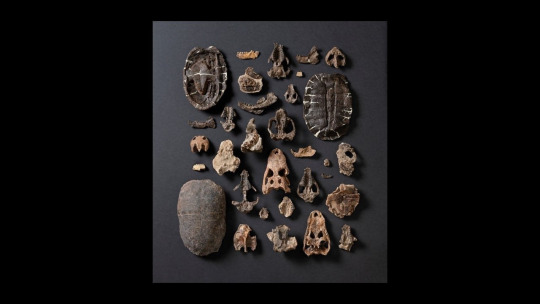
First of I think that only because the non-avian dinosaurs were gone, animals didn't start to be more active during the day right away, some of these forms were still quite similar to their Cretaceous ancestors. Secondly, we have no birds from here (so far), the branches and the sky would be empty

And thirdly, although the size chart by Discord member JW shows only two crocodile species, they actually made up over half of the fossils found in some localities. And how to better show a huge amount of crocs than at night, with all their eyes reflecting.
#paleoart#sciart#paleostream#palaeoblr#paleocene#paleogene#kpg extinction#idyllic postapocalypse#mammals#crocodile
360 notes
·
View notes
Text
344 notes
·
View notes
Text

New Multituberculate Earth content: https://multituberculateearth.wordpress.com/2022/03/29/kogaionidae-old-dogs-do-learn-new-tricks/
#multituberculate#multituberculata#multituberculate earth#allothere#allotheria#spec evo#speculative evolution#speculative biology#speculative zoology
16 notes
·
View notes
Text

Lemuria phase 1.5 submissions
Number two
Told you it gets worse. Yes it walks on its thumbs. Yes it’s called Ralph
#paleoart#speculative biology#speculative evolution#spec evo#lmao#art#Lemuria#multituberculate#paleostream#I guess
17 notes
·
View notes
Text
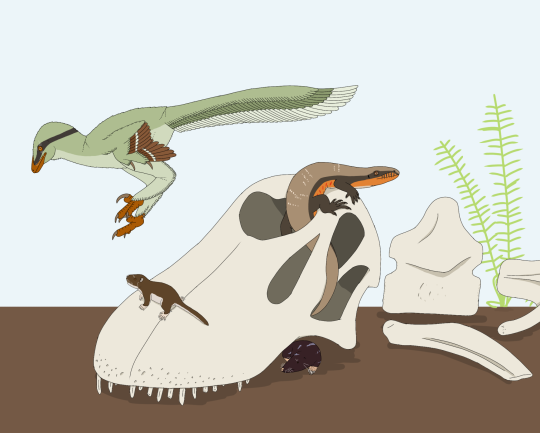
Supersaurus refugium with small denizens.
The animals depicteded here is;
-Hesperornithoides, a troodontid theropod
-Dorsetisaurus, an anguimorph lizard
-Glirodon, a multituberculate mammal
-Paurodon, a dryolestoid mammal
#paleoart#dinosaur#lizard#mammal#multituberculate#dryolestid#supersaurus#hesperornithoides#dorsetisaurus#glirodon#paurodon
12 notes
·
View notes
Text
Wikipedia links in lieu of propaganda. Cabonnicthys, a devonian lobe-finned fish
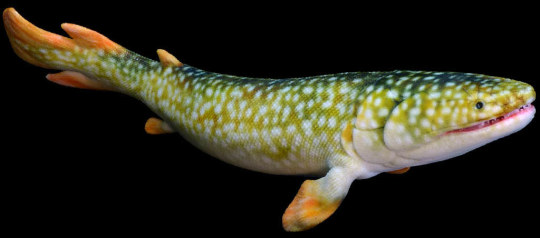
Canowindra, a lobe-finned fish

Charniodiscus, an ediacaran that's almost certainly an animal right

Ciconia louisebolesae, a miocene species of stork

Congruus, a pleistocene kangaroo with lil horn nubbins
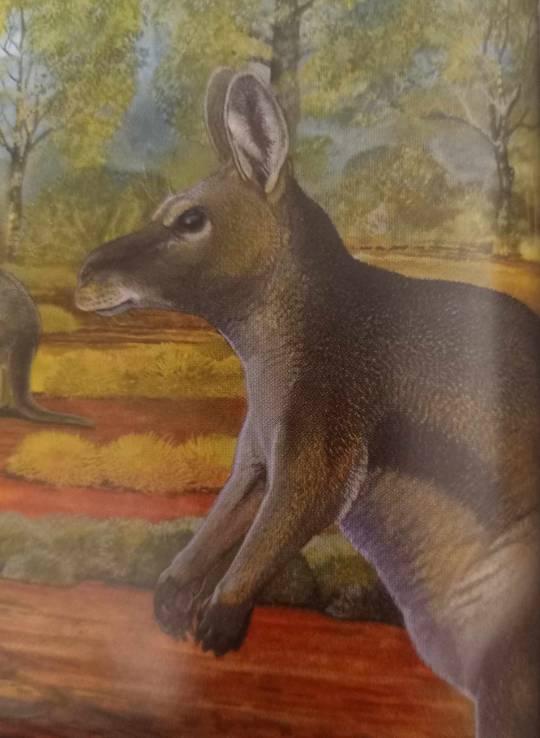
Corriebaatar, a mesozoic multituberculate mammal
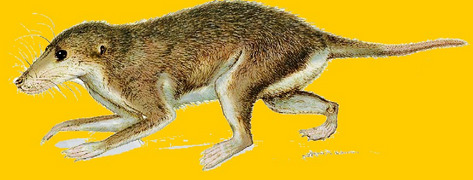
Cooyoo, a mesozoic ichthyodectid fish
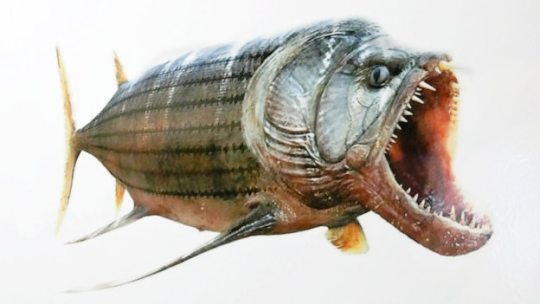
Cratochelone, a cretaceous protostegid turtle

#please reblog#feel free to advocate for your favourite#palaeoblr#australian fossil alphabet thing#dinosaur#megafauna#cabonnicthys#canowindra#charniodiscus#congruus#corriebaatar#cooyoo#cratochelone
63 notes
·
View notes
Text
Iberica hahni

Iberica was a genus of multituberculate mammal from the Early Cretaceous Period. Its type and only species is I. hahni. Known specimens were found in the El Castellar Formation in Galve, Spain. While the fossils assigned to Iberica have been known since the 1960s, they were not officially named until 2011.
The name Iberica comes from the fossil's location on the Iberian Peninsula. The specific name hahni was named in honor of Gerhard and Renate Hahn for their research on Iberian Peninsula multituberculates.
Known fossils of I. hahni include seven P1/3s (premolars), which are the type specimen, as well as the referred material of a P4 fragment (premolar) and two M2s (molars). Its autapomorphies include the four cusps on its premolars, as compared to three cusps from related genera, as well as cuspules on the mesial and distal margins.
The material assigned to I. hahni, especially the referred P4 and M2s, cannot be certainly assigned to either Eobaataridae or Plagiaulacidae. The type premolars are similar to that of Parabolodon elongatus and Eobaatar? pajaronensis. The P4 fragment is also very similar to that of Cheruscodon balvensis. The tentative assignment to Eobaataridae seems somewhat unlikely.
References: Original description by Ainara Badiola, José Ignacio Canudo, and Gloria Cuenca-Bescós; cladistic assessment by Thomas Martin et al.
Wikipedia article: Iberica hahni
#mammal#mammalia#paleoart#paleontology#artwork#original art#human artist#iberica#eobaataridae#plagiaulacidae#plagiaulacida#multituberculata#obscure fossil animals#obscure fossil mammals
19 notes
·
View notes